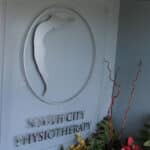Osteoporosis is a very common disease, affecting 1 in 4 people over the age of 50. As we age most of us should be doing more to minimize it’s impact on our quality of life.
What exactly is osteoporosis?
Osteoporosis is a disease of the bones resulting in a reduction in bone mineral density (BMD). As bone mineral density decreases, bones are weakened and an increased risk of fracture results.
Your bone mass naturally increases through childhood and early adulthood, reaching it’s peak at approximately 30 years of age, after which time it begins to decline. To minimize the impact of osteoporosis, as you age you have to maintain bone density as high as possible.
Who is at risk for osteoporosis?
Though most common in women after menopause. Osteoporosis may also develop in men and premenopausal women in the presence of specific hormonal disorders.
Other risk factors for osteoporosis include a family history of the disease, slender small framed women, smoking, early menopause, cortico steroid medications, deficiency in vitamin D and calcium, sedentary lifestyle, excess soda consumption, alcoholism and Crohn’s disease.
How can we protect the health of our bones?
Eating foods rich in calcium throughout life, combined with regular weight bearing exercise, is the best prescription for maintaining the health of our bones.
Why is calcium so important for bone health?
Calcium is an essential nutrient, meaning it’s one our bodies can’t make, and we need to get enough of it from the foods we eat. Calcium helps build strong bones and teeth. If your calcium needs are not met through the foods you eat, it will be withdrawn from your bones which can cause bone weakness.
Why is weight bearing exercise so important for bone health?
Our bones are living tissue, constantly renewing themselves through a process of absorption and rebuilding. Weight bearing exercises have been shown to trigger increased osteogenesis (bone rebuilding) compared to non-weight bearing exercise.
What can you do to combat osteoporosis?
• Review the common risk factors;
• Consult your doctor regarding bone density measurement procedures;
• Follow a lifestyle that is “bone friendly”. Including a proper exercise and nutrition program, and monitor medications that could impact bone health;
• Consult a Physiotherapist for advice regarding appropriate exercises and activities based on your own level of risk for osteoporosis.
In addition to whole grains, fruits and vegetables, your balanced nutritional program should include foods that supply calcium and vitamin D.
Your exercise program should incorporate various types of exercise important to building stronger bones; postural exercises, strength training, balance training, cardiovascular training, as well as flexibility exercises. In childhood, high impact exercise and sports positively influence building stronger bones. As we age this continues to be the case, but exercises may need to be modified depending on your condition and risk level for osteoporosis. For more information, consult a Physiotherapist trained in the design of exercise programs for osteoporosis.





